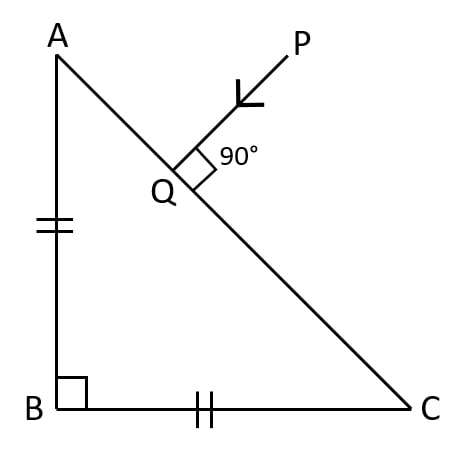Physics
A ray of light XY passes through a right-angled isosceles prism as shown in the adjacent diagram.

(a) What is the angle through which the incident ray deviates and emerges out of the prism?
(b) Name the instrument where this action of prism is put into use.
(c) Which prism surface will behave as a mirror?
Refraction Plane Surfaces
52 Likes
Answer
(a) The angle through which the incident ray deviates and emerges out of the prism is the angle of deviation.
The angle of deviation = the angle which the emergent ray makes with the incident ray XY = 90°.
(b) The instrument where this action of prism is put into use is the periscope.
(c) The surface AB of the prism behaves as a mirror.
Answered By
34 Likes
Related Questions
What is a total reflecting prism? State three actions that it can produce. Draw a diagram to show one such action of the total reflecting prism.
Show with the help of a diagram how a total reflecting prism can be used to turn a ray of light through 90°. Name one instrument in which such a prism is used.
Draw a diagram of a right angled isosceles prism which is used to make an inverted image erect.
In the figure, a ray of light PQ is incident normally on the hypotenuse of an isosceles right angled prism ABC.

(a) Complete the path of the ray PQ till it emerges from the prism. Mark in the diagram the angle wherever necessary.
(b) What is the angle of deviation of the ray PQ?
(c) Name a device in which this action is used.